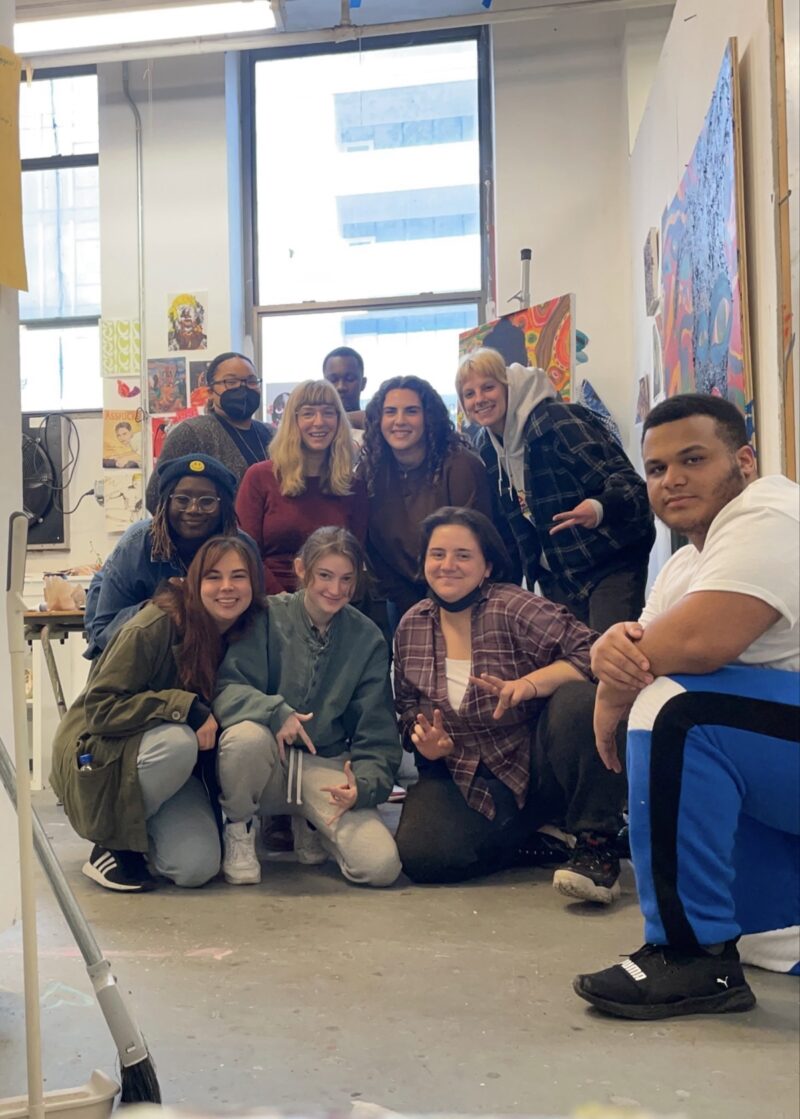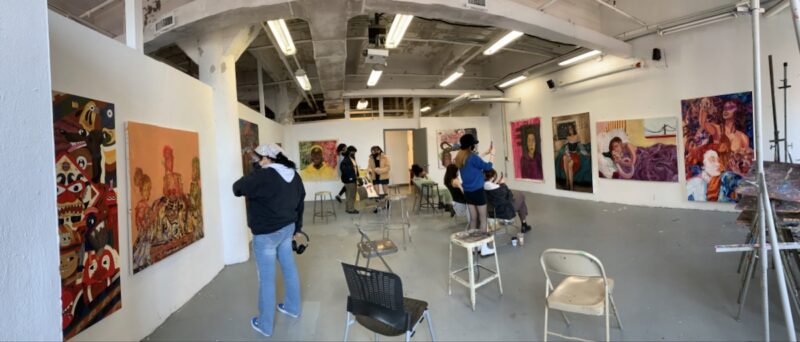
Like most of my UArts community, I’m angry. I have suddenly lost my adjunct job of 7 years, a job that’s made me nervous about enrollment or losing a class to FT seniority every semester for most of that period. It has never felt stable but I’ve always been grateful for the work, the students, and my colleagues.
We’re all experiencing shock and grief. We all deserved better than to see the news on Instagram and through chains of texts and emails across our community. We still need answers and accountability for this catastrophe. We all knew the school struggled, but it was an opaque system and like many schools the leadership had a different perspective from those on the ground. The closure of UArts and the discontinuation of Pafa’s degree granting programs make me very concerned for the future of our Philly area art schools, arts education, and jobs within these kinds of institutions.
Losing two major and historic degree granting art programs in the same city in the timespan of a year is an embarrassment to the values and culture Philadelphia prides itself on. How can we build a city’s draw on arts and culture when we neglect to cultivate the day-to-day lives, education, and practices of artists and culture producers? In contrasting ways both of these institutions have failed to support their communities because they either did not have a clear vision, or a vision that reflected the needs of the community as a whole. While Pafa was too set in their archaic ways despite student protests and outrage, UArts wildly changed programs and departments so often over the past 20 years that they lost a clear sense of identity.
We (Staff, Faculty, Students) feel used by educational institutions that act more like real estate magnates than stewards of education and culture. The failures of these institutions reveals their long term missteps in valuing Broad Street real estate and Philadelphia arts and cultural tourism over the individual students, faculty, and staff who make the city the vibrant hub people want to experience.

A school’s success and sustainability should not depend on the exploitation of adjunct and staff labor. I’m grateful to the faculty and staff who fought for a union at UArts – it has been vital in making fair progress for employees. Many staff and faculty didn’t see raises for a span of years during the last president’s time. The failures we see now show that leadership was already going down the wrong path – choosing real estate assets over the students and faculty.
Both Uarts and Pafa are private schools with historic legacies and expensive tuition. Most of my students at Uarts were in need of financial support and as an adjunct I was encouraged to ask students to get the bare minimum of supplies for class because they couldn’t afford art supplies let alone living expenses. Yet here they are, taking on major loans for an education that begins with crippling compromises. Across the many institutions where I’ve worked I have never known so many students to be juggling jobs and academics the way I have seen at UArts. Their resilience and hustle outside of the classroom is impressive, though I wish it wasn’t required. If our remaining institutions want to champion a population of first generation college students and a diverse student body then they must make arts education more accessible and sustainable economically.

These events should be seen as a warning for our remaining institutions, whether private or public, big or small. Many art schools are experiencing an existential crisis because enrollments are down and it is past due that schools ask themselves tough questions about the state of arts education, the value of it, and their visions for the future. We need to be able to communicate and demonstrate how vital an arts education is for individuals, and for our larger communities.
This failure of UArts and the larger failure of academic institutions across the country puts too heavy a burden on middle and lower income individuals, especially on first generation college students and their families. The burden of debt falls more heavily on those who are vulnerable, so naturally the burden of this school closure – like the disruption of transferring, maybe moving to a new location, or finding new jobs – will fall more heavily on those without more privileged means, including faculty and staff.
Academia was not built with most of us in mind. Historically, It was made for the wealthy and privileged few. The past is behind us, and the real concern is for our future. We need more art schools and educational communities that cultivate the arts holistically, make education affordable, and work toward making arts education a sustainable necessity, rather than a decoration on Broad Street.
More Artblog coverage of the UArts closing
Philadelphia Whiplash, Forman Arts Initiative and University of the Arts closing





